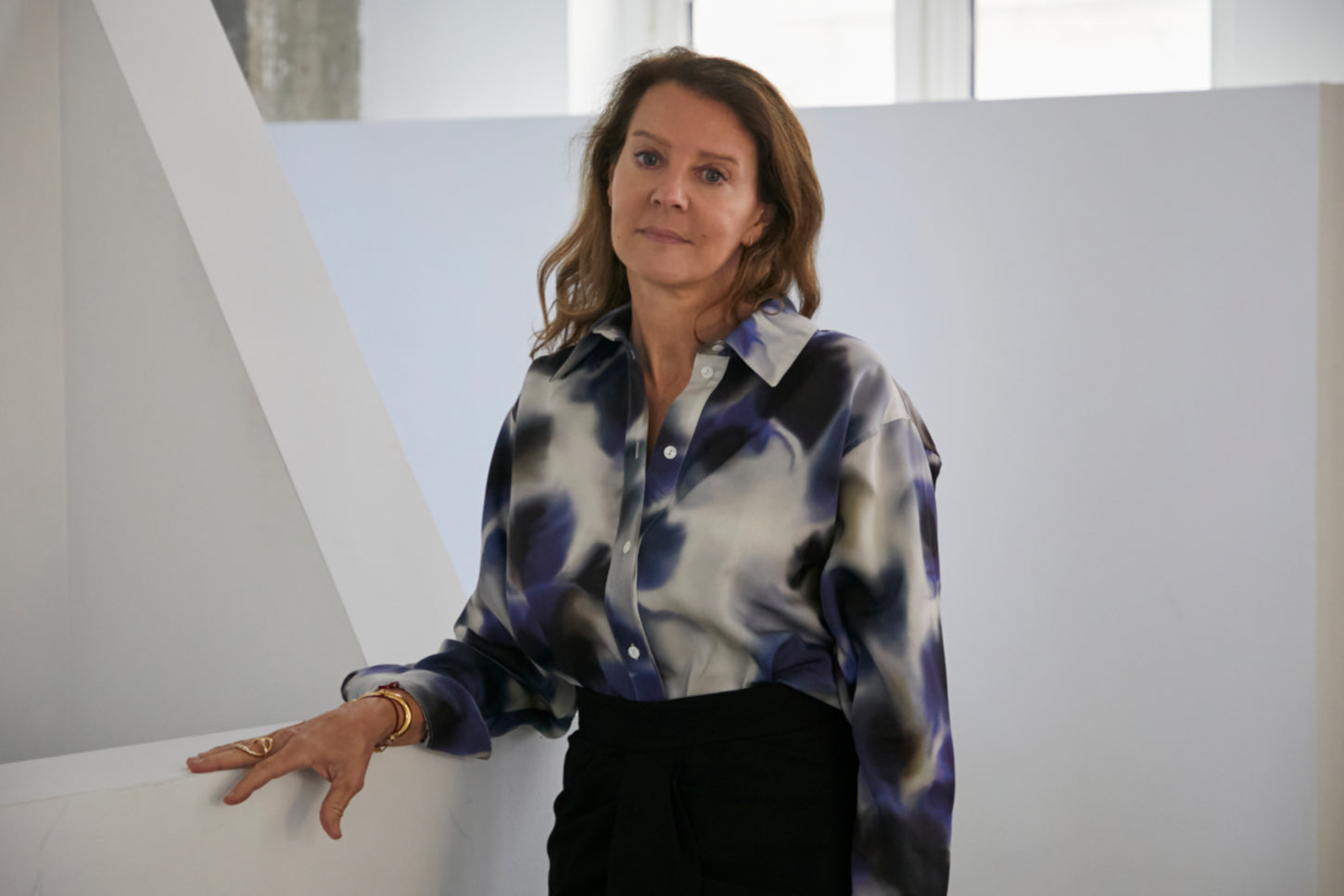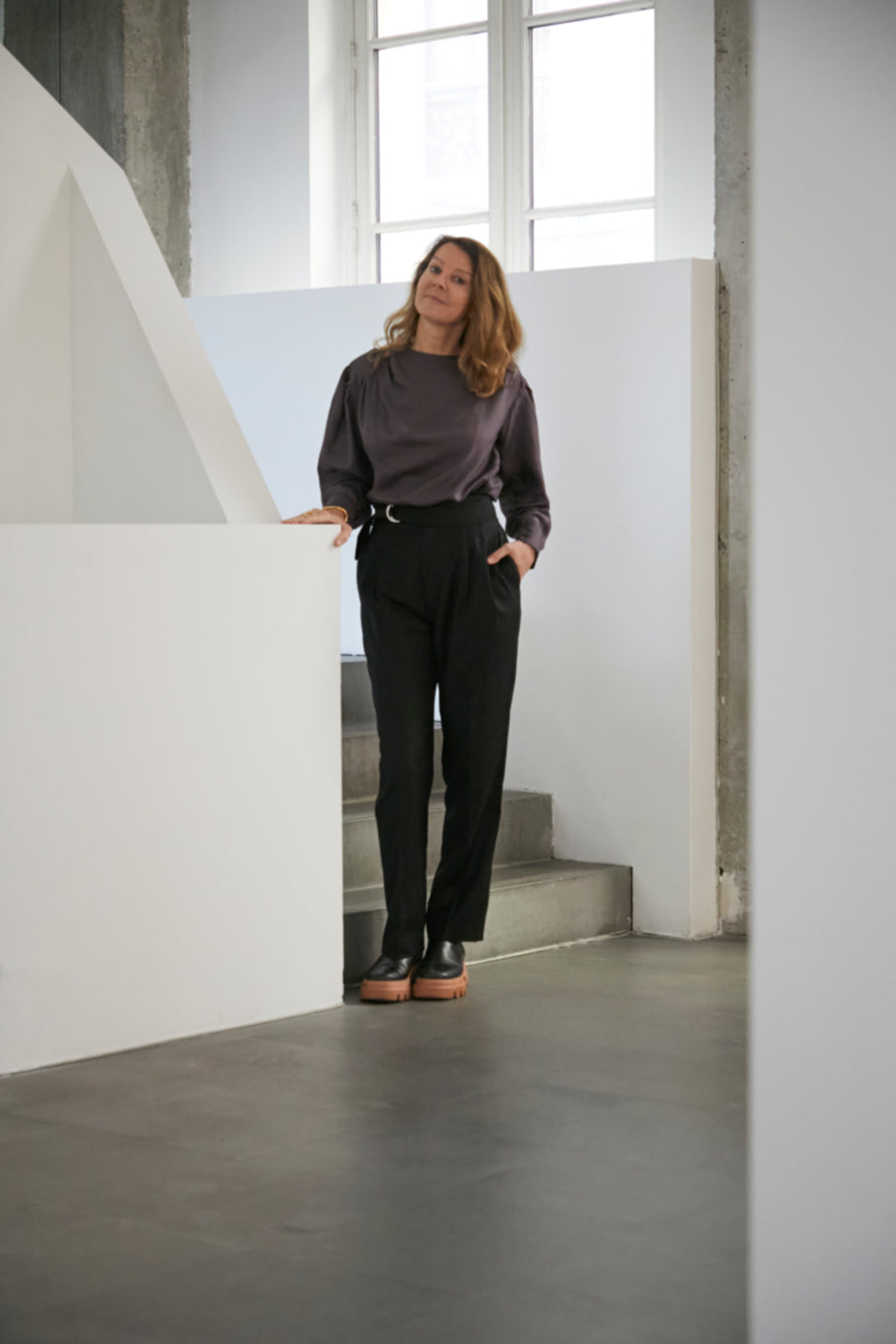
Marie Jacquier
In 2018, Marie founded her press and communications office to serve brands and players in culture and art. This has fueled numerous prestigious experiences alongside publishing houses, magazines and museums such as Télérama, Gallimard, Paris Musées (the Museums of Modern Art, Carnavalet, Cernuschi, the Petit Palais, Bourdelle, Palais Galliera, Vie romantique, etc.) but also many artists, designers and architects.
-

-

-
Just like you, Valentine has been in contact with artists for a long time and draws from them an important creative source. Which artists and works have most influenced your life and your decisions?
I draw inspiration from all the exhibitions that I have been led to think about and work on, but also from the readings and literary prizes that I support.
I was very struck by the proposal at Monumenta , by Christian Boltanski at the Grand Palais in 2010. Piles of clothes piled up on the ground, made reference to the Shoah and the clothes of the deportees. It was very gripping, we could definitely see a person behind each piece of clothing.
I also think of the staging of the giant sculptures of the Senegalese artist Ousmane Sow, in 1999, exhibited on the Pont des Arts in Paris, which we supported at Télérama. I am also proud to have created the Télérama Film Festival, my idea was to offer a rebroadcast for a week, of a selection of films released during the year and chosen by the editorial staff and readers. This was the opportunity for wonderful meetings with producers and distributors.

In recent years, our vision of the world, but also our place in it as humans, has evolved a lot. We are becoming aware of our place in the earth's ecosystem with more humility, in a way. Have you detected this sensitivity to ecology among artists as an increasingly pressing concern?
I have detected it in many artists, but also in cultural institutions that are now very aware of how to produce exhibitions, by bringing in fewer works from abroad, over long distances, to reduce their carbon footprint. More than before, works from collections are being taken out of their reserves and shown to the public.
The National Museum of Asian Arts – Guimet, whose strategy and communication I recently supported, is setting up a steering and reflection committee on these issues to move towards an eco-responsible museum.
-
The boundary between art and fashion is often tenuous and very porous, Valentine thinks of her clothes as works of art, especially her prints which have a very pictorial force. Do you believe that we can raise fashion, at least a certain fashion, to the rank of visual art alongside painting or photography for example?
Of course, I am completely in line with this idea that fashion is in itself a major art, which shows beauty, can also make beautiful. I worked for 12 years for the Palais Galliera, and the exhibitions focus on magnifying clothing, staging it in a new and contemporary way, under the leadership of the director at the time, Olivier Saillard. Let's think of the architectural clothes of Madame Grès, and the exhibition "la couture à l'œuvre" at the Musée Bourdelle in 2011. She also said "I wanted to be a sculptor. For me, it's the same thing to work with fabric or stone". The Alaïa exhibition in 2011 was also a manifesto of the creativity of this exceptional couturier. By inventing new morphologies through the simple play of complex seams, Alaïa became the couturier of a work. His influence on contemporary fashion has been absolutely fundamental.
-
More pragmatically, what motivates you to buy a piece of clothing? What are the conditions that it must meet to satisfy you?
I have crushes, unreasonable desires, I buy clothes for their style, their material, their color. At the moment, I who only dressed in black, gray, navy blue and white, I discovered the colors more present. The silhouette that a pair of pants brings when it is well cut, a heel that raises the leg, all these details count.
-

-

-
What attracted you to Valentine Gauthier’s wardrobe? Are her commitments to more responsible and ethical fashion something that touches you?
What attracts me to Valentine Gauthier's wardrobe is her vision of femininity. Something present, all in subtlety, it is a color, a material, a softness, brought by her creations. Her constant concern for ethical and responsible manufacturing are also very important to me. This changes the relationship with the brand, we do not just consume, we are in this commitment alongside her.

Finally, what are your plans for the coming months? What would you like to achieve in the future?
For the coming months, the preparation of the new edition of the Prix de la Closerie des Lilas, a wonderful prize supported by Carole Chrétiennot, which brings together women from all walks of life, and which has been celebrating a novelist for 16 years; the support of the very young Menart Fair dedicated to the art of the Middle East and North Africa created by an extraordinary woman Laure d'Hauteville who devotes her career to supporting artists from these regions; the new exhibition of CMS Collection, founded by the formidable trio, Joanna Chevalier, Hervé Mikaeloff and François Sarkozy, at the Château La Coste of the artist Nabil Nahas; the new collective project, “D'une génération l'autre, mutations de l'abstraction” of the Galerie Bessières presenting 35 artists, in their place in Chatou; to name just a few projects.
I am working on setting up a series of events, which I will soon tell you about, but it is about transmission and sharing, which drives me and makes my job ever more exciting, and always on my favorite playground, art and culture!





